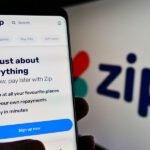A study conducted in 2011 by two University of San Diego professors says that people who read the end of a book first not only go on to read the entire book from beginning to end, but enjoy their reading experience more. Their research suggests that knowing what happens at the end makes the story less confusing and easier for the reader to navigate – and that “spoiled” versions of the story don’t cause readers to be any less interested in the book than those who don’t know the ending before they crack open the cover.
Spoiler alert.
PYMNTS’ research of 2,138 adult U.S. consumers in July 2021 finds that 29% of consumers abandon their online carts at checkout at least once a week. Two of the tp reasons they don’t buy are learning that shipping isn’t free and finding out that what’s in their cart can be bought cheaper elsewhere.
Although it’s not clear whether those consumers eventually return to complete their purchase, the lack of free shipping and uncertainty over getting the best price suggests that sites and marketplaces that offer both are more likely to win their business.
Turns out that bookworms aren’t the only ones who might benefit from knowing what happens at the end in order to make the experience less confusing, more enjoyable and more effective from the start.
Hopefully, you’ll keep reading.
Online Checkout Takes off – and So Does Checkout Friction
We do a lot of benchmarking studies and indices at PYMNTS that allow us to compare what happens over time. The perspective provided by these serial studies helps shape important insights that improve outcomes for businesses and investors across the vast payments, commerce and connected economy ecosystem.
PYMNTS has been benchmarking and indexing checkout conversion since 2016, tracking a proprietary, randomly selected basket of online merchants that represent roughly 70% of non-Amazon online sales. PYMNTS’ analysts shop those sites and examine more than 70 features that represent possible points of friction along the consumer’s path to purchase, and the dozen that our statistical models have found to make or break conversion.
The outcome of that work, the Checkout Conversion Index score, reflects a measure of checkout friction across the portfolio of those merchants. The higher the score, the better, since it reflects less friction and therefore higher conversion for those online merchants.
The latest report, in collaboration with Checkout.com, also reports the results of PYMNTS’ survey of 2,138 U.S. consumers to further assess their experiences for those 12 make-or-break checkout conversion features.
See also: Removing Friction at Checkout: Q3 Online Checkout Friction Index
In 2016, about 8% of retail sales happened online. Five years and a whole lot of payments and technology innovation later, census data show that nearly 16% of U.S. retail sales happen online, growth propelled by the pandemic and the massive shift to online purchases over the last 20 months.
Yet, the Q2 Checkout Conversion Index score is moving in the wrong direction – the degree of friction that consumers experience when shopping online over the last year has increased, not decreased. Checkout Conversion scores overall decreased by 1.1% from Q1 2021 to Q2 of 2021 – after a period of relatively steady improvement across that portfolio over the last six years. That decrease may sound small, but the fact that it didn’t increase is important since we have had constant improvements, learnings and technology that should be reducing that friction.
For the PYMNTS Checkout Conversion Index, a decrease in the index score reflects a conscious shift in the priorities merchants have set for their customers’ online experience – and ultimately their chances of converting those shoppers to buyers in the end. The decrease is particularly concerning since it happened so quickly – in just the space of three months – and as more and more consumers are making digital a larger part of their shopping routine.
That conscious shift also results from a deterioration in the two areas that now represent the battleground for winning that digital consumer’s business: good prices on the products they want to buy, shipped to them for free.
Over just the last three months, the number of merchants in PYMNTS’ portfolio that offer free shipping decreased by 15% – from roughly three-quarters of all merchants to fewer than two-thirds. Over the last year, that decline is closer to 20%. At the same time, more merchants have added minimum thresholds to qualify purchases for free shipping.

The lack of free shipping is why nearly one-fifth (17%) of consumers abandon their carts every week. These abandonments can be very costly, particularly for new online brands.
Census data show an average of retail sales online, yet we know that in many categories – such as apparel, home accessories, beauty and sporting goods – online sales are much higher. And even higher still for the coveted millennial and bridge millennial consumer.
Further, PYMNTS research shows that roughly 30% of all consumers have shifted their shopping for retail purchases to be more digital and less physical over the last two years and that nearly everyone – 92% of U.S. consumers – have made at least one purchase online over the last 12 months.
PYMNTS research shows that this coming holiday season, eight in 10 consumers plan to shop online, 15% more than those who did so in 2020. Stacking the odds against converting the portion of shoppers who will get all the way to the checkout page and not buy is risky.
See also: 2021 Holiday Shopping Outlook
Not every brand selling online has a retail storefront that consumers can visit to find what they want, get what they want and walk out with what they want – or who can buy online and pick up at the store. Once a consumer knows that a brand doesn’t offer free shipping, they might not even get a shot at their future business. Those shoppers have seen the end of the book, and may never decide to read it.
But that’s just for those consumers who bail at the checkout page.
PYMNTS research also found that consumers might not even get that far if it isn’t clear that what they want to buy is in stock (47%), or that the method of payment they want to use is accepted (also 47%). Importantly, the study finds that whether the merchant offers product guarantees or has a clear and acceptable returns policy could compel more than half – 55% – of consumers to switch. Having to pay for shipping is why 48% of all consumers in our study would shop with another online merchant that offers free shipping.
I think we’re all clear on the names of the merchants that do. And it should be quite clear that the future of retail, as defined by so many consumers who now shop online, is about logistics – about the right product being on the virtual shelf to buy, with the ability to get it delivered the next day or two days later, for free. It’s also an area ripe for disruption and innovation, as new players build platforms to unlock the untapped capacity of airline passenger cargo, and the idle time of independent delivery drivers to reduce the cost of the last mile for online retailers whose names aren’t at the top of the free shipping list today.
Also see: Shipping Startup X Delivery Announces New Leadership
 Starting at the Beginning
Starting at the Beginning
It isn’t all bad news.
Eighty-eight percent of consumers who shop online report being mostly happy with the online experiences across all of the merchants they shop. PYMNTS’ analysis of the top-performing merchants in PYMNTS’ online portfolio – across merchants of all sizes and all segments – suggests that they are in sync with what their online shoppers want. These online merchants seem to have skipped ahead to the ending of the story and integrated the features all along the shopping journey that consumers report are key to making an online purchase and remaining a loyal customer.
Perhaps the most notable improvement is in the area that is, in the end, central to checking out – how consumers pay for what’s in their shopping cart. Analysis of the merchants in PYMNTS’ online portfolio reflects an optimization of the checkout page for the payment methods that consumers want to use.
The bottom-performing merchants now offer more than six different ways to pay (up from five at the start of the year) and top-performing merchants offer roughly eight, down slightly from the last quarter. My interpretation of this finding is that instead of eliminating options, top-performing merchants are optimizing the payments mix to reflect what consumers use and might want to use to pay – including buy now, pay later options.
Of course, getting that far requires that shoppers like the journey itself enough to complete it, and then start another one with the same merchant.
As consumers live their lives in a more connected economy and conduct more of their shopping and transacting in that connected ecosystem, they will expect the experience to be more intuitive, personalized and tailored to their own individual shopping journey. They will expect that those ecosystems use technology to unlock the sources of value that improve checkout conversion because they remove the friction that consumers face – and largely endure – today on the way to checking out. A shopping experience that goes beyond the low-hanging fruit like integrating relevant offers and promo codes into the checkout experience without a consumer chasing them down, and reminding consumers along the way that free shipping comes with a minimum threshold (if that’s the case) to avoid surprises – and cart abandonment – at the end.
This experience will use data and technology to personalize and unlock new sources of value – like making points and unused gift cards spendable, suggesting what payment options might offer the best value for a purchase, and showing consumers options for how and where they can get the most value for what they have to spend and what they want to buy.
An integrated commerce experience that starts with knowing why consumers won’t buy in an effort to persuade them to do so – from you. A process that clues in the consumer at the start of the journey that they will like everything along the way, including the final checkout page.
Unlike readers of books, consumers can’t start at the end, so they need some help to make sure that by the time they get there, they not only like the ending but are glad they started the story – and tell all their friends.
You might also like: How Consumers Live in the Connected Economy
——————————
NEW PYMNTS DATA: THE 2021 HOLIDAY SHOPPING OUTLOOK

About: It’s almost go time for the holiday shopping season, and nearly 90% of U.S. consumers plan to make at least some of their purchases online — 13% more than did in 2020. The 2021 Holiday Shopping Outlook, PYMNTS surveyed more than 3,600 consumers to learn what is driving online sales this holiday season and the impact of product availability and personalized rewards on merchant preference.





